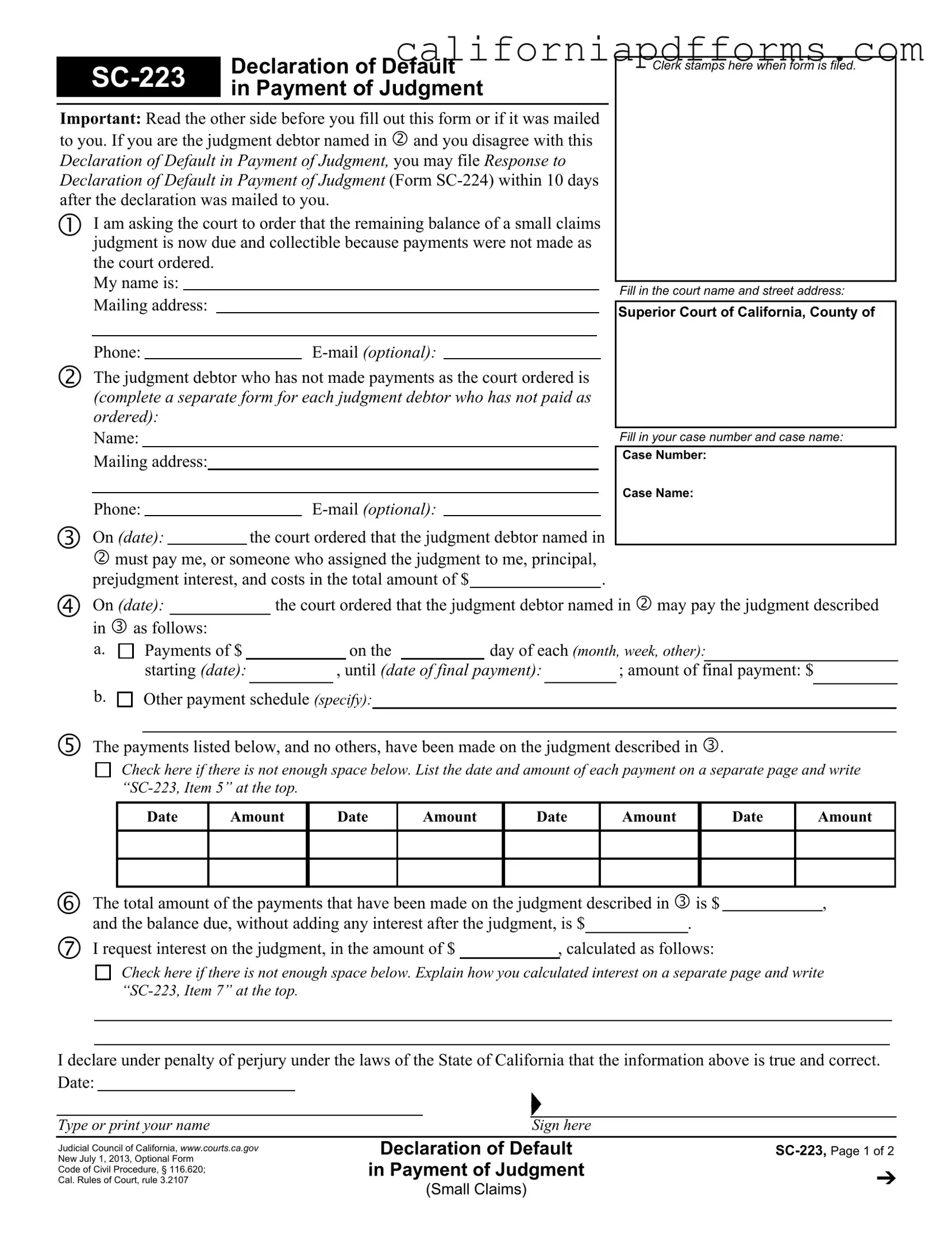Download California Sc 223 Form
The California SC-223 form is a legal document used to declare a default in payment of a small claims judgment. It allows a judgment creditor to request that the court declare the remaining balance due and collectible when a judgment debtor fails to make payments as ordered. If you need to fill out this form, click the button below.
Open Your Form Online
